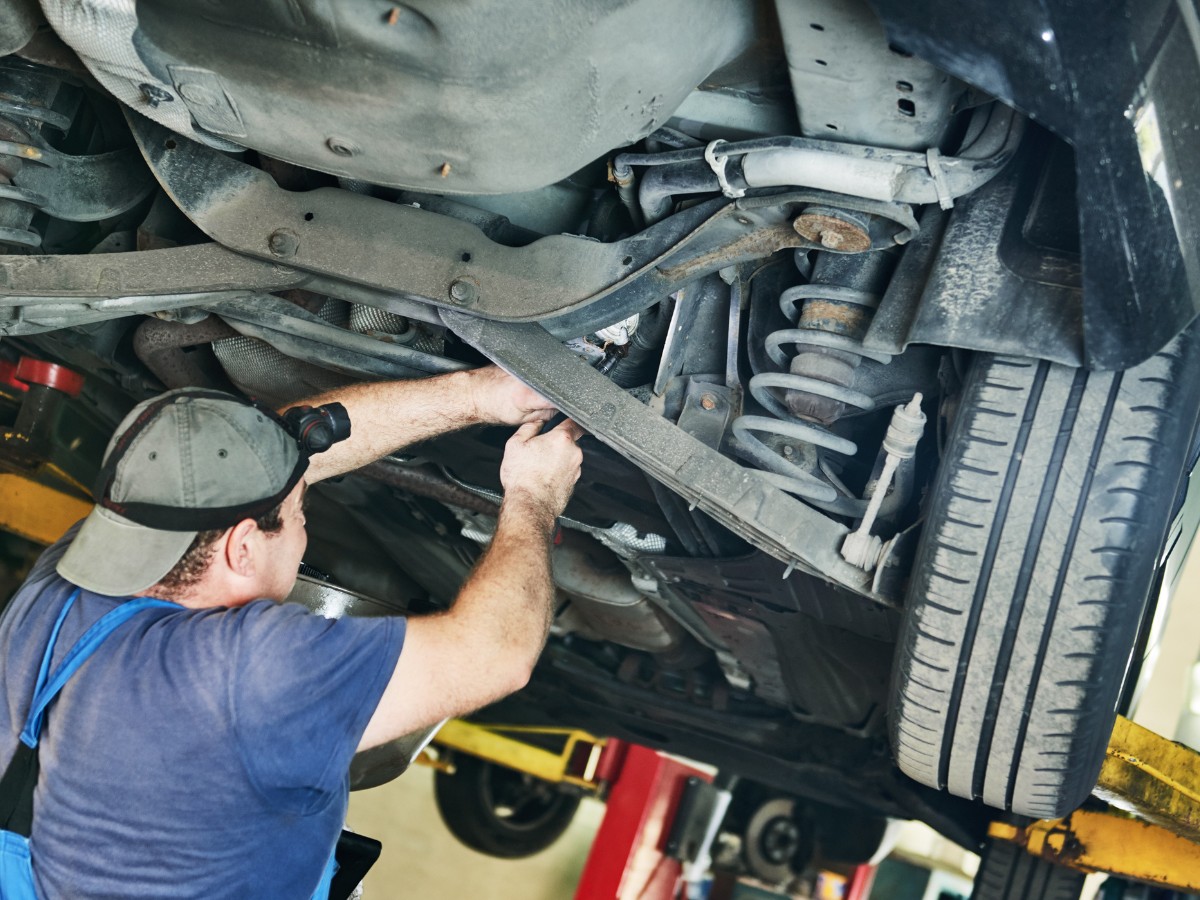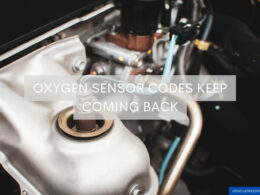In This Article Show
Today, I want to talk about a critical component of your car, one that often goes unnoticed until a problem arises – the chassis control system. This complex assembly of components works tirelessly to keep your ride smooth, stable, and responsive.
However, like any other part of your vehicle, it isn’t immune to problems. Understanding these issues, their causes, and how to fix them can save you from unexpected troubles down the road.
Whether you’re an experienced driver, a new car owner, or even someone considering buying a car, this guide will help you better understand the ins and outs of your car’s chassis control system, its common issues, and, most importantly, how to fix them.
And remember, while I’ll try to keep the technical jargon to a minimum, don’t hesitate to leave a comment if you need any clarifications.
Understanding the Car Chassis Control System
From the early days of horse-drawn carriages to today’s technologically advanced vehicles, the basic principle of motion remains the same. The vehicle needs a sturdy, reliable structure to support and stabilize its movement. In modern cars, this crucial role is played by the chassis.
The chassis control system is the backbone of your vehicle. It comprises various components such as the frame, suspension system, brakes, and steering mechanisms. These parts work harmoniously to ensure your vehicle can navigate smoothly on different terrains while maintaining optimal performance.
In my 13 years of experience as a mechanic, I have found that a well-functioning chassis control system significantly enhances driving comfort and safety.
In a nutshell, the chassis control system absorbs the shocks from the road, controls the vehicle’s direction, supports the weight of the vehicle, and collaborates with the brake system for efficient stopping. When you turn the steering wheel, press the brake pedal, or drive over a speed bump, the chassis control system works hard to ensure your ride remains smooth and controlled.
However, it’s also a part of your car that is under constant stress, and it’s not uncommon for components of the chassis control system to develop faults or errors. Recognizing these problems early is key to preventing more serious issues.

Common Symptoms of a Chassis Control System Error
Your car usually won’t stay silent regarding chassis control system errors. It will communicate with you through various symptoms that, if you are aware of, can help you take early action. Here are some common signs that could indicate a potential issue with your chassis control system:
Strange Noises
If you hear unusual sounds like clunking, squeaking, or knocking while driving, especially when turning or going over bumps, it’s often a sign that something might be off with your chassis system.
Steering Issues
Difficulties in steering, such as stiffness in the steering wheel or the vehicle pulling to one side, could indicate a potential problem in your car’s chassis.
Uneven Tire Wear
The chassis control system ensures even distribution of your vehicle’s weight. If there’s an issue, you may notice uneven or rapid tire wear.
Poor Ride Quality
If your car ride suddenly feels bumpier or less comfortable than usual, it could be due to a problem with the suspension, which is part of the chassis system.
Visible Damage
Sometimes, the problem could be visually apparent. For instance, you may notice a visible sagging or damage to your vehicle’s frame or suspension components.
Over the years in my mechanic career, I’ve come to learn that these signs are your vehicle’s way of crying for help. And while it’s easy to ignore these signs or chalk them up to “normal wear and tear,” they can often signal a chassis control system error that needs your attention.

Main Causes of Chassis Control System Errors
In my years of experience as a mechanic, I’ve found that understanding the root causes of car problems is the first step towards resolving them. When it comes to errors in the chassis control system, there are a number of potential causes. Let’s explore some of the most common ones:
Wear and Tear
Like any other mechanical system, the components of your chassis control system experience wear and tear over time. The more you drive and the harsher the conditions, the quicker this wear and tear can happen.
Manufacturing Faults
Sometimes, errors in the chassis control system can be due to defects during manufacturing. While these are usually addressed through recalls, they can still cause issues if not identified in time.
Accidents or Collisions
Accidents, however minor, can cause damage to the car chassis or its components. The impact can misalign your car’s frame or cause damage to the suspension, leading to performance issues.
Improper Maintenance
Failing to maintain your car properly, such as not getting regular wheel alignments or ignoring suspension maintenance, can lead to problems with the chassis control system.
Overloading the Vehicle
Each vehicle has a specified load capacity. Consistently overloading the vehicle can stress the chassis, causing it to wear out faster or damage.
Understanding these causes helps diagnose the problem and plays a vital role in preventing potential issues.
Diagnosing a Chassis Control System Error
Just as a doctor uses various tools to diagnose your health, some certain tools and techniques can be used to diagnose problems with your car’s chassis control system.
Visual Inspection
One of the simplest ways to detect issues with your chassis control system is by conducting a thorough visual inspection. This involves looking for visible signs of damage or wear such as oil leaks, dents, rust, or broken parts.
Using Diagnostic Tools
Modern cars come equipped with a variety of sensors that monitor various systems, including the chassis control system. When there’s a problem, these sensors send signals to the car’s computer, which in turn illuminates a warning light on your dashboard.
By connecting a diagnostic tool or a scanner to your vehicle, you can retrieve these error codes and understand what they mean.
Professional Inspection
While visual checks and diagnostic tools can reveal a lot, a professional inspection is sometimes necessary to pinpoint the problem. Trained mechanics have the expertise and experience to diagnose more complex issues that might not be immediately obvious.
Understanding these diagnostic techniques can save you time and money by allowing you to address issues before they become severe.
Fixing Chassis Control System Errors
Once you’ve diagnosed the problem, it’s time to address it. Here are some common issues you might face and how to go about fixing them:
1. Fixing Suspension Issues
Suspension problems are among the most common issues plaguing the chassis control system. This could be due to worn-out shock absorbers, struts, or springs. To fix this, you’ll need to replace these parts. Remember that suspension components should be replaced in pairs (both front or both rear) to ensure balanced handling.
2. Fixing Steering Problems
The problem in the steering system might be due to worn tie rods, a damaged power steering pump, or a leaking steering rack. Depending on the issue, you’ll need to replace the faulty parts. Topping up the power steering fluid might sometimes solve the problem.
3. Frame Damage
If the vehicle frame is damaged due to an accident or other reasons, it’s best to get it inspected and repaired by a professional. Fixing a frame requires specialized equipment and skills to ensure the vehicle is safe to drive.
4. Brake System Issues
Issues with the brake system can also affect the chassis control system. This could be due to worn brake pads, leaking brake fluid, or a faulty brake rotor. Depending on the problem, you may need to replace the brake pads, seal the leak, or even replace the entire brake assembly.
5. Wheel Alignment
Incorrect wheel alignment can lead to uneven tire wear and affect the vehicle’s handling. If you suspect this to be the case, take your car to a professional to get the wheels realigned.
While these are general guidelines, it’s essential to remember that every vehicle is different. Depending on your car’s make, model, and age, specific issues could be unique to your vehicle.
Refer to your vehicle’s manual for specific repair instructions, or get professional help for more serious or complex issues.
Remember, safety should always be your first priority. If you’re unsure or uncomfortable performing any repairs, don’t hesitate to consult with a professional mechanic.

Preventing Chassis Control System Errors
Prevention, as the saying goes, is better than cure. When it comes to your car’s chassis control system, there are a number of steps you can take to prevent issues from arising in the first place.
Regular Maintenance
The most effective way to prevent issues is to maintain your car properly. This includes regular oil changes, checking fluid levels, inspecting brakes, and getting regular wheel alignments.
Inspect Tires
Tires are the only part of your vehicle that makes direct contact with the road and play a vital role in the chassis control system. Regularly check your tires for signs of uneven wear, which could be an early sign of alignment or suspension issues.
Avoid Overloading
Each vehicle has a maximum weight capacity. Consistently overloading the vehicle can stress and potentially damage the chassis. Always adhere to the manufacturer’s recommended weight limit for your vehicle.
Drive Carefully
Your driving habits can significantly impact your car’s health. Avoid driving aggressively, as this can strain the chassis and its components extra. Also, be cautious when driving over speed bumps or potholes to prevent damage to the undercarriage.
Regular Inspections
Regularly inspect your vehicle for any signs of damage or wear. This includes checking the frame for rust or dents, the suspension for leaks or worn parts, and the steering system for any irregularities.
By taking these steps, you can greatly reduce the likelihood of running into issues with your chassis control system. Remember, taking good care of your car is not just about saving money on repairs, it’s also about ensuring a safe and comfortable ride.
Wrapping it up
Understanding your car’s chassis control system and its functioning can help you spot potential issues before they become major problems.
From knowing the common symptoms of a chassis control system error, to understanding their causes, and knowing how to fix them, we’ve covered a lot in this guide.
Regular maintenance and inspections are your best bet to prevent issues and ensure your vehicle’s long and healthy life. If you encounter a problem you’re unsure of, don’t hesitate to seek the help of a professional mechanic.











